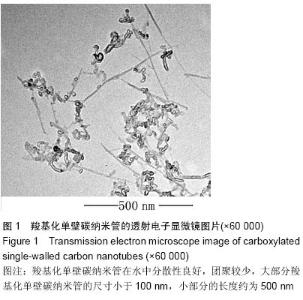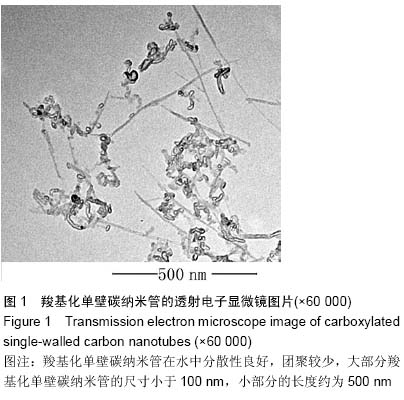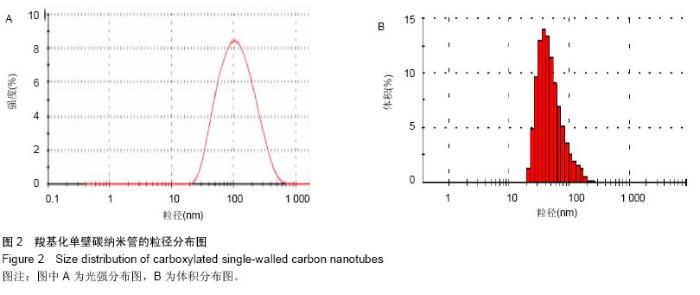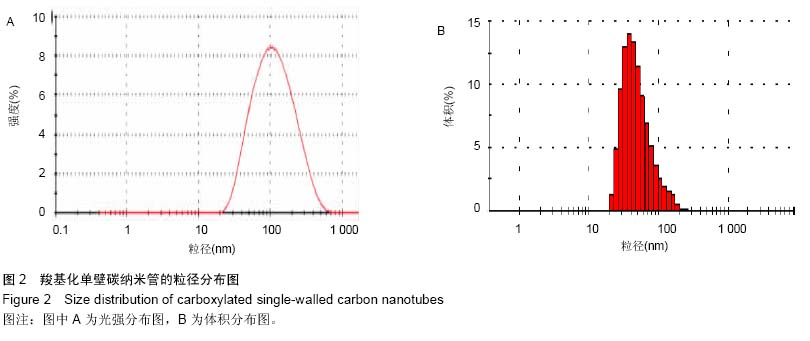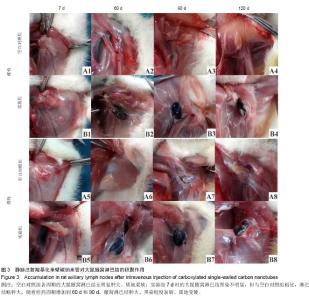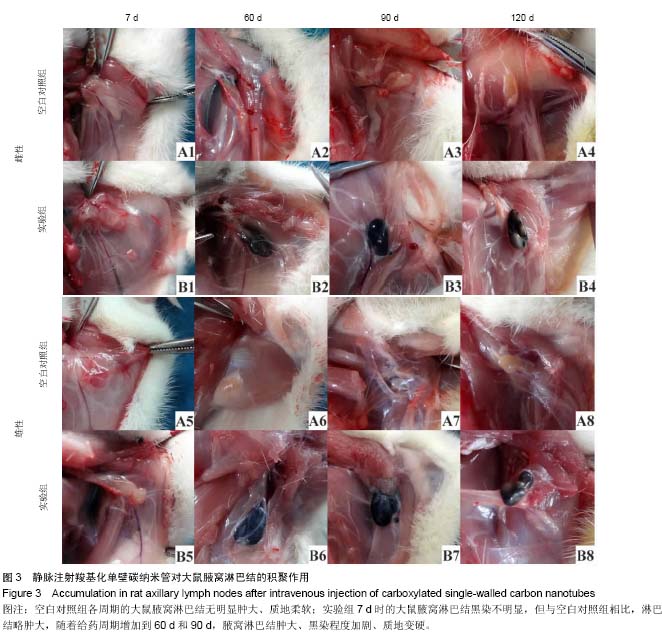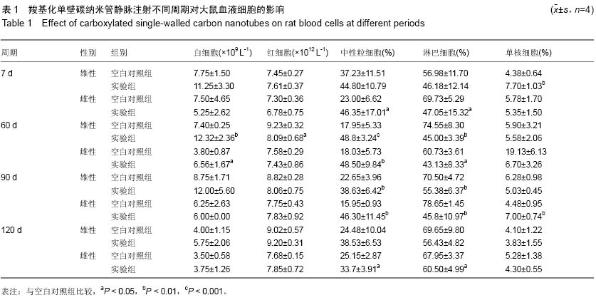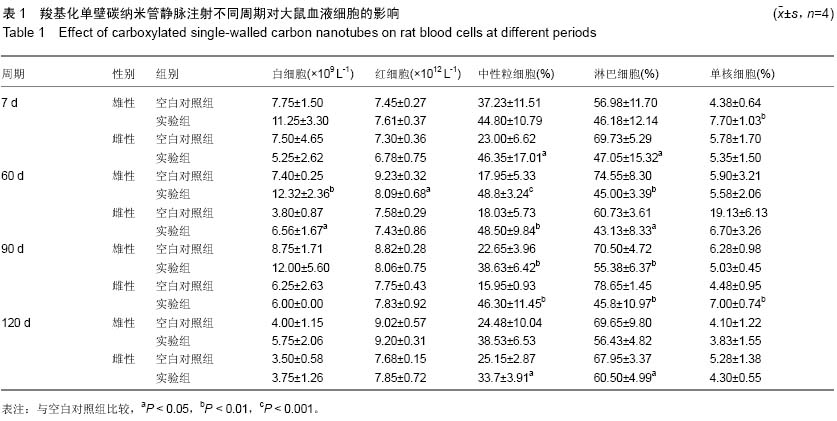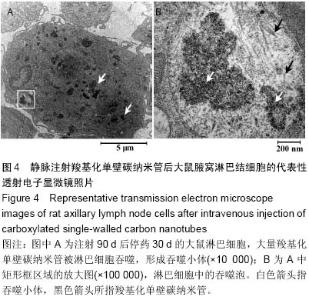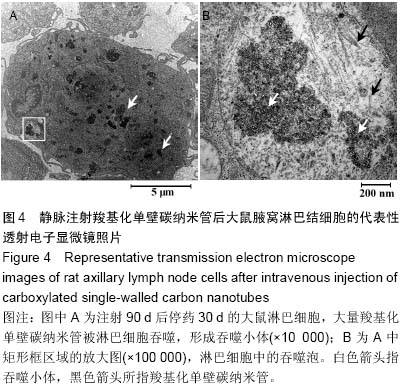| [1] Manojit P,Kwang HS,Magdalena S,et al.In vivo carbon nanotube-enhanced non-invasive photoacoustic mapping of the sentinel lymph node.Phys Med Biol.2009;54:3291-3301.
[2] Feng Y,Jianhua H,Dong Y,et al.Pilot study of targeting magnetic carbon nanotubes to lymph nodes.Nanomedicine (Lond).2009;4(3):317-330.
[3] Feng Y,Chen J, Dong Y,et al.Magnetic functionalised carbon nanotubes as drug vehiclesfor cancer lymph node metastasis treatment.Eur J Cancer.2011;47:1873-1882.
[4] Chao L,Shuo D,Chao W,et al.Tumor metastasis inhibition by imaging-guided photothermal therapy with single-walled carbon nanotubes.Adv Mater.2014;26(32): 5646-5652.
[5] 李林茂,赖泽锋,李苏宁,等.利用斑马鱼胚胎初步评价单壁碳纳米管的生物毒性[J].广西医科大学学报,2013,30(3):332-336.
[6] Wong BS,Yoong SL,Jagusiak A,et al.Carbon nanotubes for delivery of small molecule drugs.AdvDrug Deliv Rev.2013; 65(15):1964-2015.
[7] Joshua TR,Guosong H,Yongye L,et al.In Vivo fluorescence imaging in the second near-infrared window with long circulating carbon nanotubes capable of ultrahigh tumor uptake.J Am Chem Soc.2012;134(25):10664-10669.
[8] Guosong H,Shuo D,Junlei C,et al.Through-skull fluorescence imaging of the brain in a new near-infrared window.Nat Photonics.2014;8:723-730.
[9] 金彦召,谭敏.磁性碳纳米管载附5-氟尿嘧啶对结肠癌淋巴结转移的靶向抑制作用[J].中国组织工程研究,2012,16(16): 2884- 2888.
[10] Xiaoning C,Rajkumar R,Hau SW,et al.Characterization of carbon nanotube protein corona by using quantitative proteomics.Nanomed Nanotechnol.2013;9:583-593.
[11] Hélène D.When carbon nanotubes encounter the immune system: desirable and undesirable effects.Adv Drug Deliver Rev.2013;65:2120-2126.
[12] Naihao L,Jiayu L,Rong T,et al.Binding of human serum albumin to single-walled carbonnanotubes activated neutrophils to increase production of hypochlorous acid, the oxidant capable of degrading nanotubes.Chem Res Toxicol. 2014;27:1070-1077.
[13] Zhuang L,Corrine D,Weibo C,et al.Circulation and long-term fate of functionalized,biocompatible single-walled carbon nanotubes in mice probed by Raman spectroscopy. P Natl Acad Sci USA.2008;105(5): 1410-1415.
[14] Marco O,Davide B,Francesco S,et al.Impact of carbon nanotubes and graphene on immune cells.J Transl Med. 2014;12:138-148.
[15] 刘元方,刘佳蕙,王海芳.未修饰碳纳米管的细胞毒性机理及其影响因素[J].上海大学学报,2010,16(5):337-349.
[16] Soyoung L,Dongwoo K,Sang-Hyun K.High dispersity of carbon nanotubes diminishes immunotoxicity in spleen.Int J Nanomed.2015;10:2697-2710.
[17] Ningning G,Qiu Z,Qingxin M,et al.Steering carbon nanotubes to scavenger receptor recognition by nanotube surface chemistr modification partially alleviates NFκB activation and reduces its immunotoxicity.ACS NANO.2011;5(6):4581-4591. |
